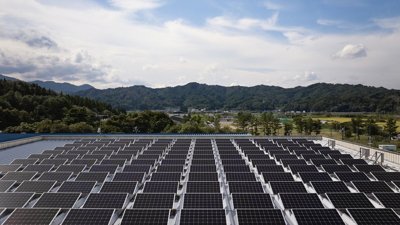A new supply chain report is putting yet another date on the calendar for MacBook Pro with OLED displays, with it now again said to arrive in 2026.
In a supply chain report more focused on OLED demand for laptops, there is a small tidbit about MacBook Pro and when Apple's flagship will get the display tech. The report includes the iPad Pro, which the report says will triple demand for OLED screens in tablets, and going forward, will influence competitors' strategies to compete with Apple in this particular market.
What's of more interest in the report is a prediction for when OLED will arrive on the MacBook Pro.
"Apple is highly likely to incorporate OLED into its MacBook Pro models as early as 2026," Omdia's Senior Principal Ricky Park said in the report. "This move could spark a significant surge in OLED demand within the notebook market, potentially reaching over 60 million units by 2031."
It's not clear if Omdia has any particular insight gleaned from data it has discovered on the release timing, though. OLED MacBook Pro models have been rumored for some time. And, nearly all of those rumors have put it a year or more away, regardless of when the rumor was made.
OLED screens give higher contrast ratios and, since they require no backlighting, are both thinner and use less power than current displays. Apple has previously been reported to release a MacBook Pro with an OLED screen in 2024.
In a report about Samsung Display being the exclusive supplier, a rumor pushed the release back to 2025. A different supply chain report in February said that the migration would happen no earlier than 2027.
A migration to OLED for the MacBook Pro is obvious. While they currently use LCD, OLED offers advantages in terms of response time and contrast ratio.
However, due to the higher manufacturing cost associated with OLED, transitioning from LCD to OLED might only be considered when substantial consumer demand exists to support it. Apple's release of the technology on iPad before Mac may be to gauge consumer interest in potentially paying more for the technology.
LTPO displays are commonly found in high-end smartphones and smartwatch models. Apple uses the technology in iPhone, Apple Watch — and now iPad Pro.
 Mike Wuerthele
Mike Wuerthele

-m.jpg)






 Malcolm Owen
Malcolm Owen
 Marko Zivkovic
Marko Zivkovic

 Chip Loder
Chip Loder
 Christine McKee
Christine McKee
 William Gallagher
William Gallagher
 Amber Neely
Amber Neely



-m.jpg)






5 Comments
OLED MacBook Pros will be a huge driver for upgrades. I'll be very tempted to upgrade one of mine immediately. But Apple will have to keep them at the same or very similar price point, which seems like it will be tough, given the price increase of the latest OLED iPad Pro....
What ever happened to micro-LEDs, I thought that was due out about the same time? Frankly, the current mini-LED displays still look fantastic and the average user really will not notice much improvement going up to the OLED whereas the prior LED backlit LCD to mini-LED transition was a significant jump in display quality.